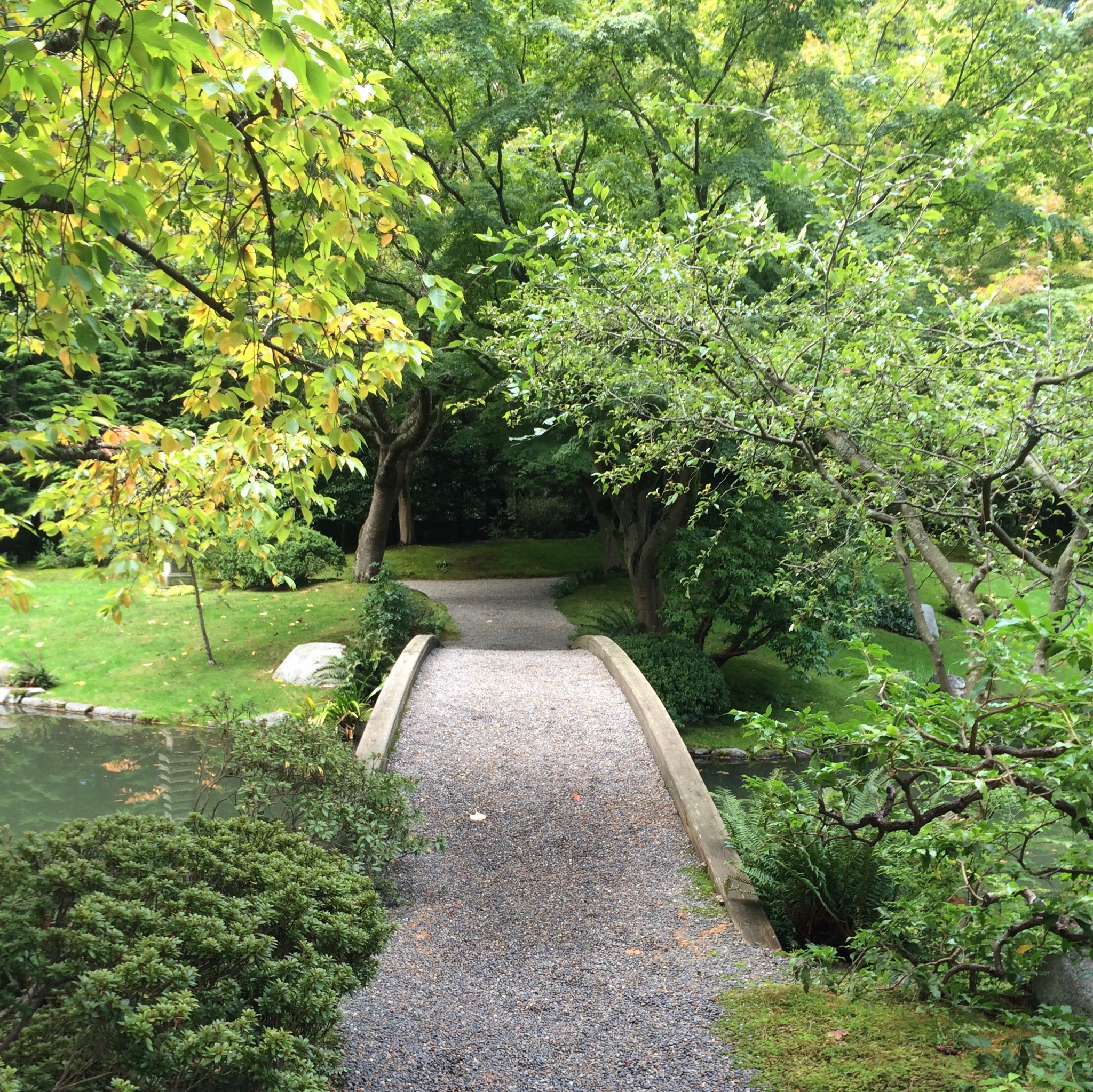Travel in our Neighbourhood
The Nitobe Garden is a traditional Japanese garden located at the University of British Columbia. It is part of the UBC Botanical Garden and Centre for Plant Research. The Nitobe Garden is one of the most authentic Japanese gardens in North America, which honors the Japanese author, educator, diplomat, and politician Nitobe Inazo who died in Victoria, British Columbia. Inazo’s goal was “to become a bridge across the Pacific”. I chose to feature a photo of the bridge that is the main structure that is located in the middle of the garden over the clear brown pond. The view of the photo depicts a person walking over the bridge which represents the goal that Inazo wanted to portray. I argue that the context of the photograph directly correlates with the theme of travel and tourism because, this is not solely a place for ‘peace’ and ‘solitude’ it is advertised as space to learn and discover the Japanese culture. I find the bridge interesting because it represents the idea of Immigration and crossing borders, along with the idea of touring a place that is created to mirror the Japanese culture without in actuality visiting Japan. When I toured the Nitobe Garden, I was encountering social difference because I was unware of the various meanings behind each plant and statue. When researching the historical significance behind the garden it did not explain the meaning and knowledge behind the garden, or specifically the bridges, rather it states to “take advantage of the nature, the stone lanterns, and the teahouse”, specifically stating “[which] all contribute to a unique and meaningful experience” (UBC Botanical Garden). There is a direct relation between orientalism and colonialism. The commodification of culture is in this garden due to having the direct aim to be to memorialize Inazo and the reflection on how he spent majority of his life bridging Japan to the United States together. Though this garden is a great space in appreciating Inazo’s work, however I argue that it displaces the type of ritual by instead shifting the garden into a space of something to be sold while travelling.
The photo of the bridge explores the aspect of mobility because it represents the reality of local to global borders through which colonizers travelled while also opening the border up to immigrants.One can go on a tour through the Nitobe Garden, I wonder what information is communicated to the tourists and who is facilitating this tour. While visiting the garden, I observed a couple tours majority of whom were white tourists taking pictures inside the garden and not being respectful to the people who were using the space for prayer. I argue that the photo of the bridge expresses the recognition of difference and needing to create a bridge in order to understand social difference. The bridge in the Nitobe Garden refers to mobility between different places, which is interesting because this place is on the UBC campus which is on unceded Musqueam territory. I think there is a link from local to global issues because this garden was created to connect the locality of one place to the larger concepts of issues that are global. I understand that due to orientalism the settler has used the concept of the ‘other’ to seclude themselves from the global scale. Therefore, this photo represents the theme of travel and tourism in the lens of creating an increase of ethical tourism in order to bridge the gap between local and global.
